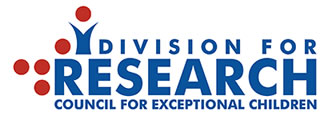
Why it’s important to talk about mental health and suicide
Suicide has been in the news with several high profile celebrity deaths. Rates of youth suicide have increased 58% since 2007 and rates of suicide among 10-14 year old girls has nearly tripled in that time. Suicide is now the second leading cause of death in the United States for kids ages 10-19.
- Approximately 1 out of every 6 high school students has considered suicide in the past year
- Suicide affects people of every race, religious background, and income level
- Kids need to know the warning signs of suicide and how to get help if needed
- The earlier a mental health issue is identified, the sooner treatment and recovery can begin
Debunking myths
The number one myth is that talking about suicide can put the idea in someone’s head. Research is very clear. Talking about suicide does not give your child ideas about trying it or increase the risk of a suicide attempt in the future. Talking about suicide shows your child that you are concerned and want to help. It also opens the door for future conversations on this topic.
A second myth is that suicidal thoughts or behaviors are a weakness, character flaws, or moral failings. Suicidal behavior has been strongly linked to underlying mental health conditions. Associated physical, emotional, and cognitive changes may reduce energy, self-worth, connectedness, ability to manage emotions, and the ability to see value in one’s future. A person who engages in suicidal behavior often views him or herself as a burden to others and often believes she/he is doing others a favor by dying. Suicide motives are rarely “selfish” or attention-seeking despite popular media portrayals of this. Furthermore, suicide is rarely about death itself. More often, suicide represents an attempt to deal with overwhelming emotional pain without the capacity to identify more effective ways to cope.
A third myth suggests if an individual is suicidal and a preferred method is restricted, he or she will always move on to another method. This is not the case. Restricting access to lethal means including firearms, medications, cords/belts/ropes during a crisis is, in fact, one of the most effective suicide prevention tools.
A final myth is that steps to prevent suicide are pointless because those who really want to kill themselves will eventually do so. The reality is that over 90% of those who attempt suicide do not ultimately die by suicide and most go on to live meaningful lives. Identifying those caring adults beyond the family, such as counselors, faith-based leaders, or the family healthcare provider can be helpful.
The Signs: What to Look for
If your child has been thinking about suicide, he/she is likely to be relieved that you brought up the topic. Ask directly about suicide if you notice any warning signs. The following warning signs indicate that a youth is severely depressed or at risk for suicide and should be responded to immediately:
- Talking to others or posting on social media about
- Suicide or wanting to die
- Feeling hopeless, trapped or like they are “a burden” to others
- Looking for a way to kill themselves
- Gathering medications, sharp objects, firearms
- Searching online for ways to end their life
- Expressing unbearable emotional pain
- Visiting or calling people to say “goodbye”
- Giving away prized possessions
- Suddenly becoming calm or cheerful after a long period of depression
The following warning signs indicate that a youth may be struggling with depression, which requires further evaluation by a mental health professional:
- Feeling sad or irritable more often than not
- Sleeping or eating more or less than usual
- Showing little to no interest in pleasurable activities
- Withdrawing from others
- Participating in reckless behavior that is out of character
- Engaging in self-injurious behavior
- Having trouble concentrating or performing poorly in school
- Complaining frequently about physical symptoms (e.g., fatigue, stomachaches, headaches)
- Increasing use of alcohol or drugs
For a list of risk factors & warning signs: https://afsp.org/risk-factors-protective-factors-and-warning-signs/
The bottom line is trust your own feelings. Take your child for evaluation if you have concerns. If you have immediate concerns, go directly to your local emergency department.
Talking to youth
If someone is struggling and having thoughts of suicide, it takes tremendous strength to talk about it and get help. Acknowledging that pain and showing acceptance towards those who take this step can go a long way. Nonjudgmental support sends a clear message that there is help.
If your child makes a comment about hurting himself/herself or wanting to die, always take him or her seriously. Start with these phrases to better understand what he or she is feeling:
- “What’s wrong? How can I help?”
- “It sounds like you are having a very hard time. Do things ever get so overwhelming that life doesn’t seem worth living?”
- “Are you thinking about killing yourself right now?”
- “You can always talk to me about how you feel. We will get through this together.”
By talking about suicide, you let your child know you are there for support and are open to discussing any topic, no matter how uncomfortable it is.
Identifying resources
Helping a person through a suicidal crisis allows them to gain confidence that they can get through it even when things are difficult. The following are useful resources.
- Apps that include both crisis resources and accessible safety planning features.
- To find a therapist, consider the Locate a Psychologist tool from the Society of Clinical Child and Adolescent Psychology.
- If your child needs help, you can call the National Suicide Prevention Lifeline at 1-800-273-TALK (8255) or reach out to the Crisis Text Line by texting “START” to 741-741.
- For individuals identifying as LGBTQ the Trevor Project at 866-488- 7386 or the Trans Lifeline at 877-565- 8860 may be good options.
The following suicide prevention websites provide additional information and resources:
http://www.thetrevorproject.org/
https://suicidepreventionlifeline.org/help-yourself/youth/
Proper citation link for this blog post:Ackerman, J. (August 31, 2018). Preventing Suicide in Youth: What Parents Need to Know. Retrieved from https://infoaboutkids.org/blog/preventing-suicide-in-youth-what-parents-need-to-know.
















